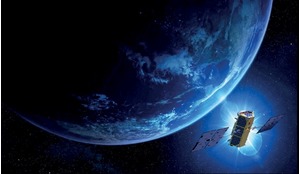Could life on Earth have arrived from far across space? Many experts believe that water- and life-bearing asteroids and comets could have crashed into Earth aeons ago, starting the process of life on our planet. But now a small Chinese NewSpace company is looking in the other direction, sending DNA, the blueprint of life, from Earth into space.
Endless Door Aerospace Science & Technology was founded by Li Bing and Chen Shi in Shenzhen, China with the initial idea that, for a commercial fee, the DNA of individuals would be carried into space as a permanent memorial of their existence on this planet.
But their ambitions didn’t stop there. According to Li Bing, the idea was to “preserve Earth’s full gene record - human, animals and plants - not only as a memorial of our existence, but by putting it in capsules, keeping alive the possibility that one day, when it is needed and the technology sufficiently developed, it can be alive again”. Her overall intention, she explains, is to “preserve life, the most precious feature of Earth and the universe, in a proper way, firstly in Earth orbit, but later on the Moon and Mars and eventually deep space, as far as it can go”.
Each sample had its own sealed capsule intended to provide protection from radiation and the extremes of heat and cold
Previously, in 1997, American rockets had sent the remains of 24 people into space in the first private space burial and in 1999 the ashes of lunar geologist Eugene Shoemaker were taken to the Moon in honour of his contribution to planetary science. There are now a small number of companies offering ‘space funerals’ (most of them yet to happen) but according to Li Bing, what Endless Door is doing is totally different.
 Open Door s Chen Shi and Li Bing with science fiction author, Liu Cixin (centre).
Open Door s Chen Shi and Li Bing with science fiction author, Liu Cixin (centre).
For the first launch in the Endless Gates Space Gene Bank Project, they collected 5 mls of blood from a vein of representative humans (including her own and that of Endless Door co-founder Chen Shi), sufficient to extract a complete DNA sequence, encased in small protective containers to preserve it in the space environment. Genes were also donated by popular science writer Li Wei and by Liu Cixin, China’s best known science fiction writer, author of The Three-Body Problem, shortly to be a major new Netflix series and the short story, The Wandering Earth, which became a box-office-record-breaking film in 2019.
 Li Bing giving a 5ml blood sample for DNA for the first launch of the project.
Li Bing giving a 5ml blood sample for DNA for the first launch of the project.
The development of the idea in China required the help of two important collaborators, one on the genomics side, the other on the spaceflight side. Endless Door’s principal institutional collaborator was the Beijing Genomics Institute (now called the BGI Group) in Shenzhen. The Institute was set up in Beijing in 1999 as a small research centre for genetics and became the Chinese participant in the original human genome project. It rapidly grew into a significant gene sequencing body, commercialised in 2012, and is now one of the largest companies of its kind on the planet, with over 10,000 staff worldwide. Endless Door attracted support from private individuals, BGI and its second main collaborator, China Academy of Launch Vehicle Technology (CALT), which shared the idea of building a gene bank of humans, animals and plants in outer space. CALT had rockets at its disposal and could offer Endless Door’s small but precious cargo a ride.
For the project, the complete, effective and sequenced DNA from humans and other animals and plants were stabilised for permanent preservation
Endless Door’s first launch was with the Tianyi satellite that accompanied the China France Oceanography satellite, CFOSaT on 29 October 2018 on the CZ-2C from Jiuquan, sent to an altitude of 510 to 523 km, sufficiently high to be safe for tens of thousands of years.
The DNA of four people was carried on what was called a ‘Space Proving Platform’ and the event was reported in the media as “the beginning of a programme to explore technologies for interstellar migration”. Each sample had its own sealed capsule intended to provide protection from radiation and the extremes of heat and cold, so theoretically, it should be stored safely indefinitely.
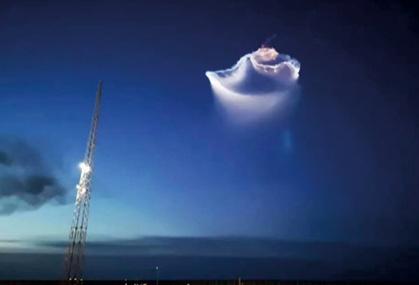 The second cargo flew on the CZ-11 rocket launched on 21 December 2018, its trail creating a spectacular jellyfish-shaped cloud during the ascent.
The second cargo flew on the CZ-11 rocket launched on 21 December 2018, its trail creating a spectacular jellyfish-shaped cloud during the ascent.
Endless Door was quickly offered a second flight opportunity, but given only 10 days to organise everything. Working with BGI, the company assembled individual capsules for 20 people (who paid a fee) and another 30 scientific capsules. These included the DNA of rare and endangered animals (the South China Tiger, Golden Monkey, Skywalking Gibbon); more common animals (cow, dog and cat); and plants (corn, rice, dandelion and orchids). The tiger sample came from Kang Kang, a male South China tiger in Guangzhou Zoo in Guandong - no such tigers live in the wild any more.
 Rice and the Cymbidium orchid were among the plant DNA sent into space.
Rice and the Cymbidium orchid were among the plant DNA sent into space.
For the project, the complete, effective and sequenced DNA from humans and other animals and plants were stabilised for permanent preservation. They were put into the Endless Door patent gene silo in a sterile environment, to be carried by a satellite rocket’s upper level or a free-loading satellite into space for long-term preservation without human influence.
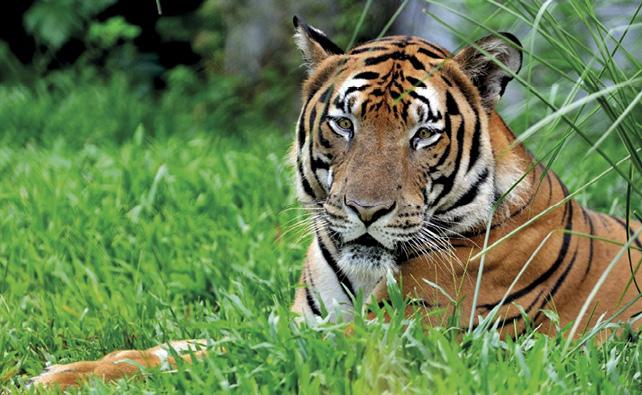 South China tiger Kang Kang, whose DNA was sent into space in December 2018.
South China tiger Kang Kang, whose DNA was sent into space in December 2018.
The second cargo flew on the smaller CZ-11 rocket from Jiuquan on 21 December 2018 with the primary payload, the Hongyun 1 communications satellite, reaching an orbit of 1063 to 1075 km high. It took off into the early dawn sky, its trail creating a spectacular jellyfish-shaped cloud during the ascent.
“We worked for years and got our own patent to reconnect our DNA to the universe, the very information of life itself, to last for over 10,000 years”
Endless Door is run by three directors: Li Bing, Chen Shi and Shang Hui. Li Bing is a personal investor and former investment banker who worked for over 12 years in trust funds where she managed funds equivalent in value to €9.27 billion, including over eight years at Ping An Trust, a subsidiary of Ping An Group, ranked 33rd in the Fortune Global 500.
Engineer Chen Shi, was formerly at Kechuang Science and Technology Aerospace, the large aerospace company and creator of the KS-1Q student amateur radio satellite that flew on the CZ-11 rocket that launched the XPNav pulsar navigation satellite on 9 November 2016 from Jiuquan.
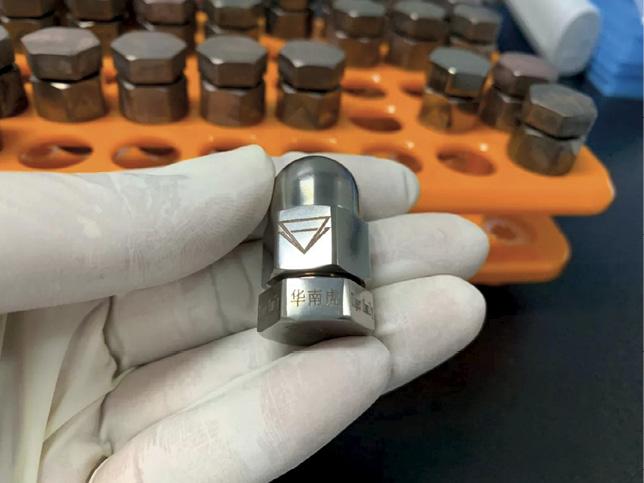 The capsule containing the DNA of South China Tiger, Kang Kang.
The capsule containing the DNA of South China Tiger, Kang Kang.
When they approached Liu Cixin, he quickly agreed to support the project, because it chimed with his themes concerning humanity’s fate in the universe. Another influential supporter is Li Miao, the famous astrophysicist, cosmologist and writer of science and science fiction for children and adults, now at Sun Yat-Sen University School of Astronomy and Physics.
What has been the reaction to this project? Li Bing says that many people have been wowed by the idea, considering it a meaningful approach to testing how, in the long term, human, animal and plant life could be preserved. Some people were very pleased to be associated with the idea of preserving the long-term possibility for life. Some were puzzled, some thought it was a joke, while others questioned whether those who sent their DNA into the universe were just using money to buy fame. After the Covid pandemic and the growth of a worldwide sense of vulnerability, more and more people became interested in a project to build a gene bank in space together. It was a way for people to give hope to themselves, their families or loved ones, in the possibility of a long-term future in the universe.
The preservation of such DNA, for example in the case of the Chinese tiger, may be the “last defence of the data of the species” free from further human influence
According to the China Daily newspaper, the preservation of such DNA, for example in the case of the Chinese tiger, may be the “last defence of the data of the species” free from further human influence, and “backup storage of the genes of an endangered species”. Could such DNA be found in the distant future by an alien space-faring civilization? Could it then be possible to re-create humans, tigers, animals and plants from their DNA? Endless Door opens the prospect of a Noah’s Ark from Earth, which in the future could be the basis for the re-creation of life on our planet elsewhere.
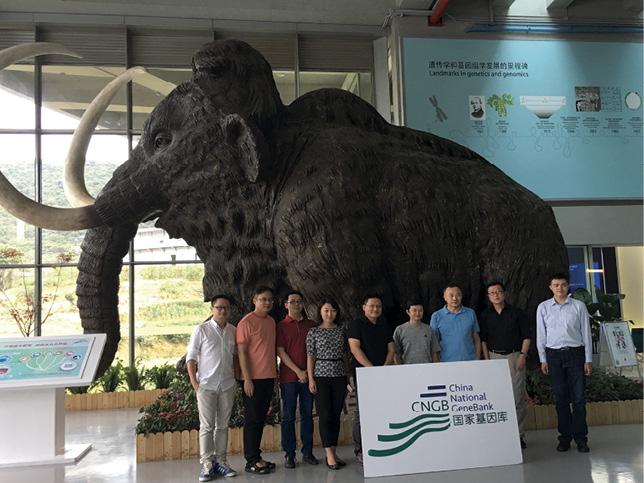 Setting up the project with woolly mammoth in China National Gene Bank, Shenzhen, 19th May 2017, first meeting between Endless Door and BGI.
Setting up the project with woolly mammoth in China National Gene Bank, Shenzhen, 19th May 2017, first meeting between Endless Door and BGI.
 Lin Yilun, musical superstar, with his certificate, with Li Bing.
Lin Yilun, musical superstar, with his certificate, with Li Bing.
 This photograph of children at Frankfurt International School primary class was miniaturised and enclosed in the capsule on the second, December 2018 launch.
This photograph of children at Frankfurt International School primary class was miniaturised and enclosed in the capsule on the second, December 2018 launch.
This a long-term project. According to Li Bing, “We worked for years and got our own patent to reconnect our DNA to the universe, the very information of life itself, to last for over 10,000 years.”
Endless Door is hoping for a third launch during 2024.
About the author
Brian Harvey is a space writer and broadcaster based in Dublin, Ireland. He is the author of Japan in space - past present and future (Praxis/Springer 2023), China in Space - the Great Leap (2nd edition) (Praxis/Springer, 2019), European-Russian Cooperation in Space - from de Gaulle to ExoMars (Praxis/Springer, 2021) and, with Gurbir Singh, The Atlas of Space Rocket Launch Sites (DOM, Berlin, 2022)









